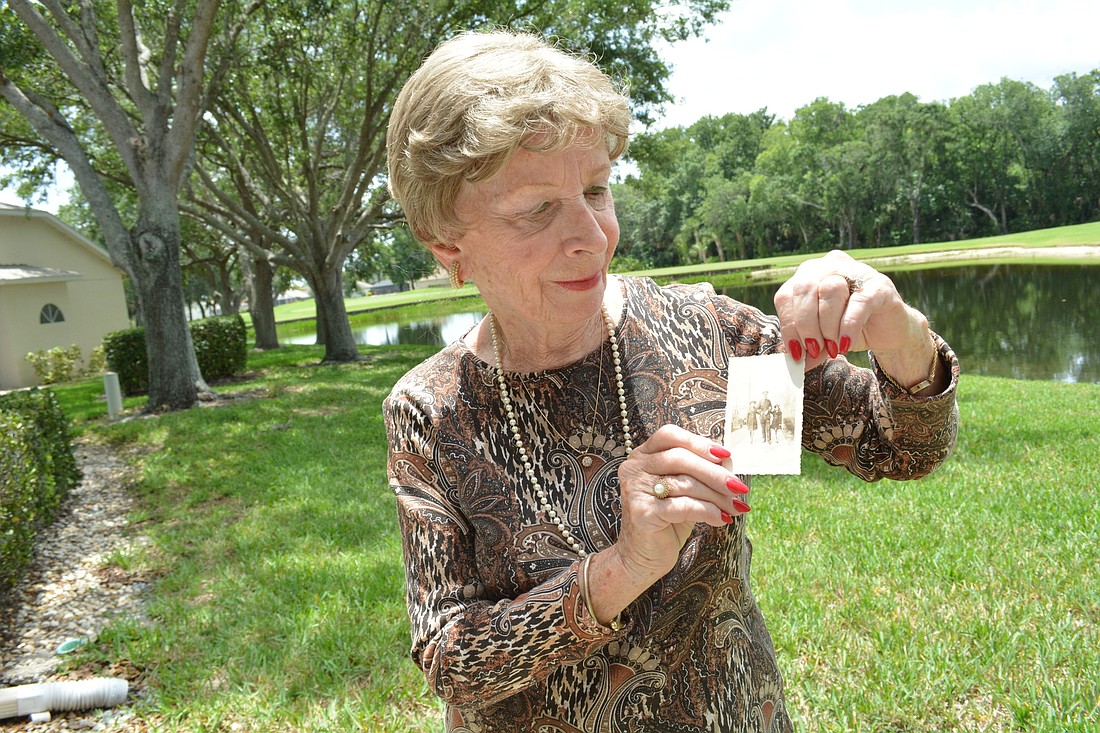- April 23, 2024
-
-
Loading

Loading

In elementary school in 1944, Pauline Kozuch bore the weight of World War II with a badge of pride and a desk stacked with coins.
In her seventh-grade classroom in Hartford, Conn., Kozuch would retrieve war bond stamps from her homeroom teacher and carry them to her wooden desk. Classmates would trade dimes for the stamps needed to fill their war bond booklets. With all the stamps in place, a war bond booklet with a face value of $18.75 would be worth $25 at maturity.
At 9 years old, she became a volunteer “Rosie,” a term coined from the 1942 poster of Rosie the Riveter flexing her arm muscles beneath the words “We Can Do It!” The campaign encouraged women to enter the workforce.
It’s estimated more than 6 million women helped produce 297,000 airplanes, 102,000 tanks, 372,000 artillery pieces, 88,000 warships and about 44 billion rounds of ammunition, according to the American Rosie the Riveter Association.
They were joined by an estimated 10 million Rosie volunteers, women who performed such war-related work as collecting materials or growing food.
Kozuch was one of them.
“The war wouldn’t have been won without the women,” said Yvonne Fasold, a past president of the American Rosie the Riveter Association. “It was the production of all the war goods that made winning WWII possible.”
The Tara Golf and Country Club resident remembers taking both ends off cans with a can opener, placing the can on its side and stomping it flat with her feet. The metal could be recycled.
She helped plant a Victory Garden, filled with food to help ease demand on the food supply.
She hastily pulled down black window shades if sirens signaled a possible air raid. And she prayed.
“I was trying to do what I could,” Kozuch said. “You felt patriotic. What can I do when I’m 10, 11? When you could do it, it felt good.”
At the time of the war, Kozuch lived in a four-room, fourth-floor apartment in Hartford, Conn., with her mother, Catherine Young, and older sister, Elizabeth Wolf. The three shared the combined living and dining area to sleep and rented the bedroom to a war bride named Natalie Garvin. Garvin manufactured engines at Pratt & Whitney.
“I never did meet her husband, but he came home,” she said.
Kozuch said her contributions pale to those of a true Rosies, and she feels passionately their contributions should be recognized.
“It’s not about me,” said Kozuch, whose story is in a collection of Rosie memoirs published by American Rosie the Riveter Association. “I wasn’t a real, true Rosie, but they accepted me.”
When the war started, Kozuch remembers only that she was attending Sunday school. When it ended, she remembers the triumph.
Kozuch said the war, in many ways, may have impacted adults more than the children like her, but it planted in her a “you can do it” attitude and a deep sense of patriotism.
Fasold said those traits are synonymous with Rosies.
“They were doing what was required,” she said of Rosies. “They didn’t know it was anything special. They broke barriers for the rest of us.”